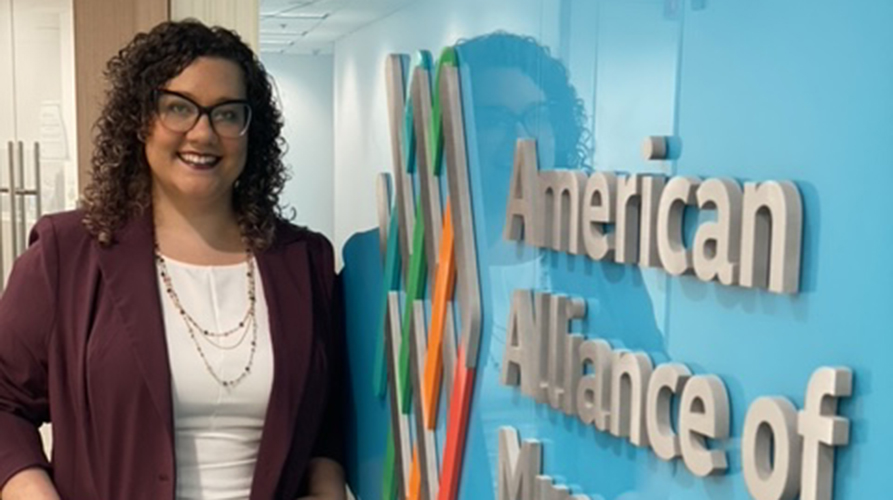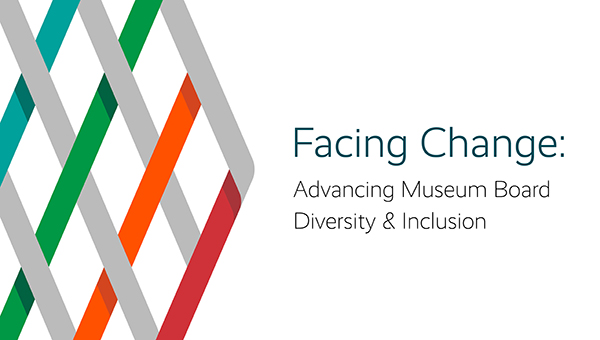A Leader for Everyone: Alumna Helps Museums Live Their Values
By Scottie Barsotti
In her role as a DEAI leader for the American Alliance of Museums, CMU alumna Grace Stewart helps cultural institutions live up to their values and enact meaningful change—from the top down.
Initiatives that center diversity, equity, accessibility, and inclusion (DEAI) have become mainstream. DEAI values statements and action plans can be found at organizations of all types and sizes, as companies reckon with decades—even centuries—of systemic inequality and disparities, both internally and in society at large.
“People are actually talking about these issues now. That’s the biggest change from when I was in school,” said Grace Stewart (MAM '12), Senior Manager of DEAI Programs at the American Alliance of Museums (AAM). “It wasn’t embedded in the way organizations talked about themselves then. And even when they did talk about it, it seemed to be more from an HR and legal compliance lens, whereas now it’s about culture change.”

--
Stewart is a graduate of the Master of Arts Management (MAM), a joint degree program of the College of Fine Arts and the Heinz College of Information Systems and Public Policy. She heads an initiative at AAM called 'Facing Change' that works with partner museums to achieve such culture change, working directly with museums’ boards of trustees for top down results. She says one of the keys in this work is getting an institution’s leadership to ask the right questions—“transformational rather than transactional questions” that focus on values, community, and belonging rather than meeting legal requirements or quotas.
You need action from both ends, grassroots and leadership, and alignment between them.Grace Stewart
“These conversations often would center on diversity alone, and measuring diversity in a silo is very transactional, it is counting demographic representation and not focused on structural or cultural change. Representation alone doesn’t help you measure inclusion, equity, sense of belonging, or access. And many diversity initiatives stay within HR—they are viewed as pipeline issues,” Stewart said. Now, she says DEAI conversations are encompassing threads of empowerment and power sharing within organizations.
”Once you begin thinking beyond just representation, you are presented with substantive questions such as: How do you retain and support a racially diverse workforce? Why would they stay?”
Through the Facing Change program, AAM currently partners with about 50 institutions. The program focuses on working directly with museums’ boards to change the dynamics at their organization, centering racial disparities in particular. In the past, DEAI efforts have often been staff-led, grassroots initiatives. While staff-led efforts are crucial to creating an inclusive and equitable environment, these efforts could be stopped or defunded by leadership based on what the board wanted to approve. Also, a staff effort could lose momentum or come to a halt if the staff leader leaves the organization and the initiative isn’t “baked in.”
“You need action from both ends, grassroots and leadership, and alignment between them to make sure the staff and the board are using the same language and working in tandem,” Stewart said.

Facing Change
AAM's Facing Change initiative, which Grace Stewart leads, works directly with museums and their boards nationwide
Measuring Equity
Stewart brings significant quantitative management skills to her work as a DEAI leader. She graduated from CMU with an understanding of how to integrate data into her approach to solving problems. Especially in DEAI work, data and evaluations are extremely important to understanding whether an organization is serving its community and meeting its goals.
“One critical thing is to figure out what exactly you are trying to measure,” said Stewart. “Measuring equity is different from measuring diversity, for example. To measure equity, you have to disaggregate your data so you can compare disparities by race and other demographics. Who has the power to make decisions? How do you determine whether a person feels empowered or feels like they belong? Do they feel like their identity is celebrated versus simply tolerated or worse, exploited? A balance of quantitative and qualitative data is necessary to find those answers.”
Stewart’s role has grown since she joined AAM. What began as a temporary grant-funded position tied to the Facing Change initiative has become a permanent position leading AAM’s broader DEAI programs as a Senior Manager, including their internal efforts. She also now teaches a "Leading with Equity and Inclusion" course for Heinz College, focused on addressing oppression at multiple levels and building anti-racist organizations.
“Some of the things that were most helpful about my CMU education had to do with organizational design and structure, and thinking about how decisions are evaluated and made, and how structures and systems are built,” she said. “Not everyone understands that management and leadership are skills you can learn, and because I learned those skills at CMU, I am continuing to grow and hone those skills in my professional work.”